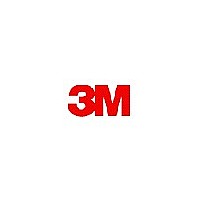RAISLETAPE54 3M, RAISLETAPE54 Datasheet - Page 6

RAISLETAPE54
Manufacturer Part Number
RAISLETAPE54
Description
TAPE ROHS AISLE MARKING 54' ROLL
Manufacturer
3M
Datasheet
1.RAISLETAPE54.pdf
(100 pages)
Specifications of RAISLETAPE54
Tape Type
Marking - Printed "Lead-Free Area"
Backing, Carrier
PVC (Poly Vinyl Chloride)
Thickness
0.0060" (6.0 mils, 0.152mm)
Width
3.00" (76.20mm) 1/4'
Length
54' (16.5m) 18 yds
Color
White, Green Print
Usage
Aisle Marking
Lead Free Status / RoHS Status
Not applicable / Not applicable
Temperature Range
-
Adhesive
-
Thickness - Adhesive
-
Thickness - Backing, Carrier, Liner
-
Other names
51111764688
80000954547
80000954547
6
6
3M
At one time, adhesive and glue were used synonymously. In industry today, however, designers and engineers are using terms like two-part
low-odor acrylic, high bond tape, PUR systems, cyanoacrylate, and more. Glue is now considered to be something sticky which is no longer a
characteristic of many adhesives.
3M adhesives can be classified in several ways.
Classify by form
3M adhesives are available as liquids, pastes, tapes, films, and
shaped solids. Each has characteristics to be considered for
application effectiveness and efficiency.
Liquids and pastes readily fill voids to enhance mechanical adhesion.
Many liquids can be sprayed to cover large areas.
Films and pressure sensitive tapes offer advantages unique to their form:
Hot melts are supplied as solid sticks, cartridges, pellets, or similar
shapes. Handling and storage is easy and neat.
Classify by strength
Another classification for industrial applications is by relative
strength and solidification process. Generally, those adhesives that
bond through a chemical reaction are stronger than those that bond
through a physical change.
Structural adhesives bond by chemical reaction.
3M
a product. As a rule of thumb, structural strength adhesives reach a
minimum of 1,000 psi overlap shear strength. 3M formulations
include the following:
• Epoxy adhesives are available in one and two-part liquids and
• Cyanoacrylate adhesives are high strength liquid
• Uniform thickness throughout the joint.
• Confinement of the adhesive to the immediate bonding area.
• Clean bonding without dripping or overflow.
• Minimum adhesive waste.
• Die-cut into complex shapes to facilitate bonding of
• Acrylic adhesives are two-part liquids and pastes to bond the widest
• Urethane adhesives are generally lower cost two-part liquids and
complex parts or parts with narrow bonding surfaces.
pastes. Of all 3M adhesives, these provide the highest strength
and elevated temperature resistance.
variety of substrates including hard-to-bond plastics and
oily metals. The distinction is high strength bonding without
the surface preparation needed for epoxies and urethanes.
pastes that cure quickly to an elastic bond in applications requiring
flexibility between dissimilar materials. Impact resistance is
a distinctive characteristic.
formulations known as instant adhesives. On rigid plastic,
glass, metal, rubber, and other low porosity substrates, they
harden in seconds through reaction with surface moisture.
™
Structural Strength Adhesives bond the load-bearing parts of
™
Adhesive and Tape classifications – you really can’t say “glue” any more
• Anaerobic adhesives are liquids that cure to a tough plastic in
Non-structural adhesives bond with a physical change.
Non-structural adhesives vary in strength from repositionable to
strength equal to or greater than the strength of the substrate being
bonded. These adhesives are typically less than 1000 psi and bond
materials in cushions, gaskets, insulation, veneers, and general
assembly. 3M formulations include the following:
Pressure sensitive adhesives
Pressure sensitive adhesives (PSAs) found in 3M tapes grip
immediately to mating surfaces. With dwell time, the adhesive
conforms to surface irregularities.
3M hybrid classifications
• Hot melt adhesives melt and flow under heat to wet the
• Rubber adhesives are solvent-based or water-based and
• Contact bond adhesives are usually rolled, brushed, or sprayed
• Curing hot melts (Polyurethane Reactive [PUR] adhesives) are
• Reclosable fasteners combine adhesive and mechanical
the absence of oxygen and in the presence of metal. Typical
applications include threadlocking, retaining, gasketing, and sealing.
substrates and make bonds quickly upon cooling. Products are
available with a variety of characteristics such as short set times,
sprayable formulas, and permanent PSA properties. Applications
range from sealing to bonding automotive interior trim.
solidify through evaporation of the carrier. Products are designed
for adhesion to various substrates, application methods, and
environmental resistance of the bonded product.
on the two surfaces to be mated and permitted to become dry to
the touch with a variety of open times. When the surfaces are
pressed together, near ultimate bond strength is achieved.
moisture-curing urethanes that apply like a hot melt adhesive
but cool to bond strength usually associated with two-part
structural adhesives.
fastening principles. Pressure sensitive adhesive permanently
bonds two reclosable mating strips to the substrates that
need to be opened and closed multiple times.










